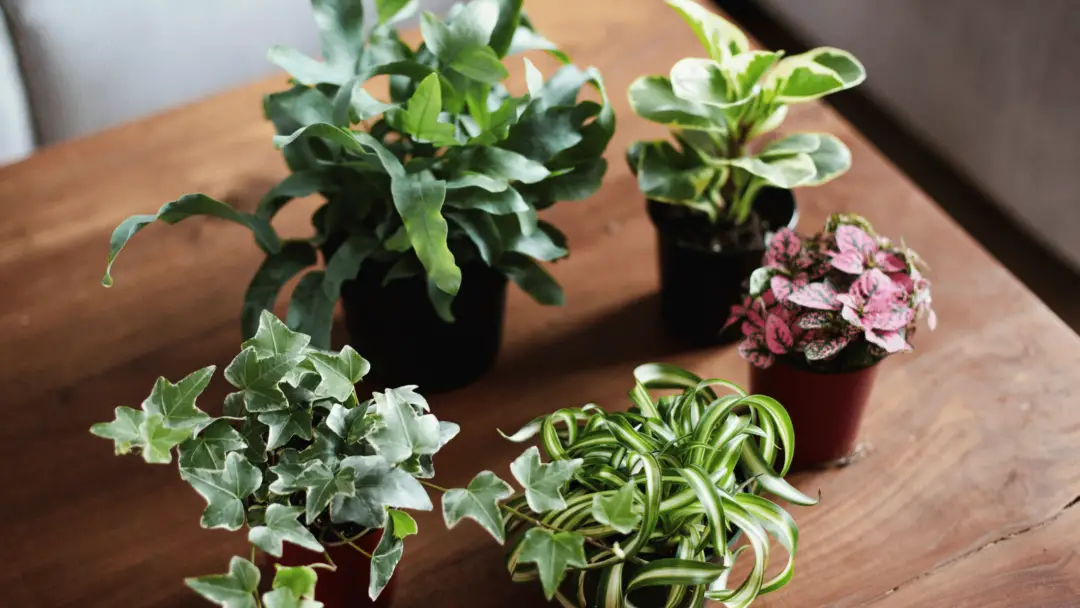If you’re eager to immerse yourself in Swedish culture and traditions, discovering the most popular hobbies in Sweden offers a fascinating entry point.
Cooking and baking are among the top hobbies that Swedish people enjoy. This reflects the nation’s deep-rooted appreciation for home-cooked meals and traditional recipes.
From baking cinnamon buns to preparing classic dishes like meatballs, you can explore Sweden’s culinary heritage.

Traveling is another widely embraced activity in Sweden.
The country’s picturesque landscapes, rich history, and vibrant cities provide endless opportunities for adventure.
Whether it’s hiking in the serene countryside or exploring historical landmarks in cities like Uppsala, there’s always something new to discover.
Engaging in traditional Swedish celebrations and activities is a great way to experience the local culture.
Festivals such as Midsummer and Lucia are not just festive events but also windows into Sweden’s intriguing past and collective memory.
Each tradition carries its own unique charm and historical significance, welcoming you to feel a part of Swedish life.
The Cultural Fabric of Sweden

Swedish culture blends ancient traditions with modern ingenuity. The rich cultural heritage includes vibrant celebrations and a unique societal ethos that prioritize both community and individual creativity.
Significance of Swedish Traditions
Sweden’s cultural landscape is deeply rooted in its traditions, several of which are celebrated nationwide.
Midsummer is perhaps the most famous, marked by dances around the maypole, floral wreaths, and communal meals. This celebration brings people together to welcome the summer solstice.
Christmas in Sweden is another noteworthy event.
Festivities start on December 13 with Lucia Day, featuring candlelit processions. The season also includes special dishes like herring, ham, and the traditional Julbord.
The Royal Family also plays a significant role in upholding and promoting various traditions. Their involvement in national celebrations symbolizes unity and continuity.
Swedish traditions mirror the nation’s history and values, fostering a sense of shared identity among citizens and preserving the cultural fabric for future generations.
The Swedish Approach to Innovation and Creativity
Sweden is renowned for its innovative spirit and creative industries. The Nobel Prize, awarded yearly in Stockholm, underscores Sweden’s commitment to progress in science, literature, and peace.
This prestigious award highlights the nation’s dedication to celebrating and fostering global innovation.
Sweden’s approach to creativity is also evident in its design and technology sectors.
The country has produced globally influential brands like IKEA and Spotify, which emphasize simplicity and user-centric design.
The Law of Jante, a cultural concept that discourages boasting, paradoxically encourages innovation by fostering a community-focused environment.
This ethos ensures that creative efforts benefit society as a whole.
Sweden’s rich tradition of innovation and creativity continues to shape its cultural identity, reflecting a balance between honoring the past and embracing the future.
A Glimpse Into Swedish Heritage and History

Sweden’s rich history and cultural heritage are deeply intertwined with its monarchy and storied past. The Swedish Royal Family has played a significant role in shaping the nation’s identity, reflecting a blend of ancient traditions and modern influences.
The Historical Roots of Swedish Culture
Sweden’s history stretches back to the time of the Vikings. Uppsala, once a center of Norse pagan worship, is a key example of this ancient heritage.
The country’s transition to Christianity in the 11th century marked a significant cultural shift.
The Vasa Ship, a 17th-century warship now housed in the Vasa Museum in Stockholm, underscores the nation’s naval prowess and historical significance. This ship sank on its maiden voyage and was later salvaged, offering invaluable insights into Sweden’s maritime history.
Mining also played a notable role. The Old Coppermine Fröå Gruva launched in 1744 and was operational for 170 years. Such sites highlight Sweden’s industrial past and its impact on local communities.
The Role of the Royal Family in Shaping Swedish Identity
The Swedish Royal Family has been essential in the development of the country’s identity.
King Gustav Vasa, who reigned in the 16th century, is a particularly influential figure. He is credited with founding modern Sweden by uniting disparate regions and establishing a centralized administration.
The Royal Palace in Stockholm stands as a testament to this legacy. It is not merely a residence but also a symbol of national unity and heritage.
The monarchy’s continued presence influences Swedish culture and traditions, fostering a sense of continuity and pride.
The Royal Family participates in various cultural and charitable activities, further embedding their role in the societal fabric. Their influence extends beyond politics, touching on numerous aspects of everyday life in Sweden.
Discovering Swedish Art and Literature

Swedish art and literature hold a profound place in the cultural landscape of Sweden, showcasing both historical depth and modern creativity. As you explore these fields, you will discover notable works and influential figures that have shaped Sweden’s artistic and literary realms.
Influence of Swedish Literature
Swedish literature boasts a rich heritage with writers like August Strindberg and Selma Lagerlöf, who have left a lasting impact.
Lagerlöf, the first woman to win the Nobel Prize in Literature, became famous for her novels and stories filled with folklore and mysticism.
Modern authors continue this tradition with crime novels gaining worldwide popularity, exemplified by Stieg Larsson’s Millennium Trilogy.
Sweden also values children’s literature, with Astrid Lindgren’s Pippi Longstocking becoming a beloved character globally.
Libraries throughout Sweden make literature accessible, promoting a culture of reading. Learn more about Swedish literature to appreciate its diverse genres and themes.
Swedish Modern Art Scene
The modern art scene in Sweden is thriving, with Stockholm as its epicenter.
Institutions like the Moderna Museet showcase contemporary works from both local and international artists. Public art is also prevalent, with sculptures and installations throughout urban landscapes.
Swedish artists like Hilma af Klint, who is considered a pioneer of abstract art, have gained international recognition.
Art fairs and events, such as Stockholm Art Week, further the country’s vibrant art culture.
Traditional practices merge seamlessly with new media art forms, creating a dynamic environment that encourages innovation.
Swedish modern art offers a compelling blend of historical roots and avant-garde expressions. Discover different perspectives and explore more about Sweden’s modern art here.
The Essence of Swedish Social Customs and Norms

Swedish social customs and norms are built around the concepts of modesty, privacy, and a balanced lifestyle. These cultural traits manifest in both private and public life, from daily interactions to community standards.
Understanding Fika and Socializing
One of the most cherished Swedish customs is Fika, a social coffee break that often includes pastries.
Fika is not just about drinking coffee; it represents a moment to pause and connect with friends or colleagues.
You can expect Fika to happen at least once a day in most workplaces, emphasizing community and conversation.
Unlike hurried Western coffee breaks, Fika encourages a relaxed and unhurried atmosphere. This custom reflects the Swedish value of Lagom, which means “just the right amount.”
It’s common to avoid extremes and maintain a balance.
Swedes are typically quiet and reserved, often valuing quality conversation over quantity. This reserve extends to social settings where loud or overly expressive behavior can be frowned upon.
The Subtleties of Swedish Public Life
Privacy and personal space are fundamental in Swedish public life.
It’s normal for Swedes to maintain physical and emotional distance from strangers.
You’ll notice that people rarely engage in small talk with unknowns. This is not rudeness but a cultural norm valuing personal boundaries.
The Law of Jante is another influential concept, which discourages standing out or displaying wealth and success.
This underpins behaviors like modesty and equality in social interactions.
Swedes often avoid conflicts and public confrontations. The society promotes peaceful, quiet coexistence.
Even in queues or public transport, expect a calm and orderly environment.
Respect for the law and communal responsibility is also high. This extends to punctuality, where being late can be seen as disrespectful.
Celebrating Festivities: Swedish Holidays and Special Occasions

Swedish holidays reflect a rich tapestry of historical and cultural significance. The most notable celebrations include Midsummer and Christmas, each marked by unique traditions and festivities.
How Swedes Celebrate Midsummer
Midsummer, or Midsommar, is one of the most cherished holidays in Sweden.
Celebrated around the end of June, it marks the summer solstice and the longest day of the year. You’ll find friends and families gathering in parks and countryside locations.
A key component of Midsummer is the maypole or midsommarstång, which people dance around, often to traditional folk music.
Food is also central to the celebrations. Expect to see tables laden with herring, new potatoes with dill, and strawberries.
Drinks like schnapps are enjoyed, often with singing. Midsummer is a public holiday, so many businesses close to allow for full participation in the festivities.
Christmas and Other Seasonal Festivities
Christmas in Sweden kicks off with the Advent season, when households display Adventsljusstake (Advent candlesticks) and enjoy a series of small celebrations leading up to Christmas Eve.
Christmas Eve, or Julafton, is the main event when families gather for a festive meal, exchange gifts, and watch the traditional “Donald Duck” TV special.
The Christmas meal typically features dishes like ham, meatballs, and various fish dishes.
On the morning of December 13th, Swedes celebrate St. Lucia’s Day with children dressed in white, singing, and holding candles.
Easter, or Påsk, is another key occasion, featuring family meals, candy-filled eggs, and decorations in yellow and green.
The Swedish National Day on June 6 commemorates the election of Gustav Vasa as king in 1523, and features parades and flag-waving celebrations.
Exploring the Swedish Lifestyle

Swedish lifestyle emphasizes simplicity, sustainability, and a balance between work and leisure.
From the choices of daily habits to their unique sense of fashion and design, Swedes live in a way that values both individuality and community.
Lifestyle Choices and Habits
Swedes value a balanced work-life structure. The concept of “lagom”, meaning “just the right amount,” reflects their moderate approach to life.
This balance is seen in their work culture, where reasonable working hours and substantial vacation time are prioritized.
Physical activity is a significant part of Swedish daily life. Many people walk or cycle as their primary means of transportation.
Outdoor activities like hiking and skiing are popular, contributing to their consistently high quality of life.
Social practices, such as the daily coffee break known as “fika”, promote relaxation and reconnection with friends and colleagues.
Simple yet meaningful, these habits underscore the importance Swedes place on community and mental well-being.
Fashion and Design in Sweden
Swedish fashion is marked by minimalism, functionality, and sustainability.
Brands like H&M and Acne Studios exemplify these principles, offering clothing that is both stylish and practical.
The focus on renewable materials and ethical production is a hallmark of Swedish design.
Footwear is another aspect where practicality meets style. Swedish clogs, once seen as merely functional, have become a trendy item in global fashion circles.
They represent the blend of comfort and chic that defines Swedish footwear.
In home design, Sweden leads with its iconic Scandinavian design style.
Characterized by clean lines, natural materials, and a neutral color palette, this design approach treasures simplicity without sacrificing elegance.
Popular stores like IKEA have made this style accessible worldwide.
Recreation and Popular Hobbies in Sweden

Sweden offers a unique blend of outdoor activities and cultural pursuits that are both popular and accessible.
Exploring nature, engaging in sports, and participating in music and dance are among the most cherished pastimes.
Nature and Outdoor Activities
Swedish people have a deep connection to nature, with activities like hiking being incredibly popular.
Hiking trails are extensive and offer breathtaking views, making it easy for you to reconnect with the outdoors.
Other popular outdoor activities include kayaking in the archipelagos, fishing in the abundant lakes, and cycling through scenic routes.
During winter, you can enjoy skiing and snowboarding in the northern regions.
These activities not only promote physical health but also provide a peaceful escape from the hustle and bustle of city life.
The country’s emphasis on preserving natural parks and reserves makes it easy and attractive for you to engage in outdoor recreation.
Music and Dance
Music and dance hold a special place in Swedish culture.
Sweden is known globally for its contributions to pop music with famous artists like ABBA and modern pop icons.
Learning to play an instrument or join a choir is a popular way to spend your free time.
Dance, particularly traditional folk dances, is also widely appreciated.
Events, festivals, and local gatherings often feature traditional music and dance performances, providing you with an opportunity to experience Swedish culture firsthand.
Engaging in these activities not only offers a way to express creativity but also serves to strengthen community bonds.
Guiding You Through Sweden

Planning a trip to Sweden can be exciting, with its mix of rich history, vibrant cities, and breathtaking natural landscapes. Learn about the must-visit places and practical travel tips to make your journey smooth and enjoyable.
Must-Visit Places and Experiences
Stockholm is the heart of Sweden, blending contemporary art and medieval architecture.
Visit the Vasa Museum, which houses a well-preserved 17th-century ship.
Gothenburg, Sweden’s second-largest city, offers stunning coastal views and the famous Liseberg amusement park.
For nature lovers, the Swedish Wilderness features national parks like Sarek and Abisko, perfect for hiking and wildlife spotting.
For something unusual, explore the Båstnäs Car Cemetery, Europe’s largest car cemetery hidden in pine forests.
Sweden Travel Tips and Practical Information
Weather: Sweden experiences cold winters and mild summers. Pack layers to stay comfortable in fluctuating temperatures.
Travel: Use the efficient public transport system. Trains, buses, and bikes are excellent ways to get around. For longer distances, high-speed trains are a good option.
Payments: Sweden is moving towards a cashless society. Most places accept card payments, so carrying a minimal amount of cash is wise.
Language: While Swedish is the official language, English is widely spoken, making it easier for English-speaking travelers to navigate the country effectively.
Accommodation: Varied options range from traditional stugas (cabins) to modern hotels and eco-friendly lodges.
Frequently Asked Questions

Swedish culture and traditions deeply influence recreational activities. This extends to common leisure pursuits, food’s role in hobbies, historical pastimes, and a comparison with American hobbies.
How do Swedish cultural traditions influence local recreational activities?
Swedish traditions such as Midsummer and St. Lucia’s Day bring communities together for dancing and singing.
These events also encourage outdoor activities like hiking and fishing, reflecting Sweden’s deep connection to nature.
What are some common leisure activities that Swedish people engage in?
Popular leisure activities include cooking and baking, as well as traveling.
Swedish people also enjoy spending time outdoors, participating in sports like soccer and ice hockey, and engaging in creative pursuits such as knitting and woodworking.
In what ways do food and cuisine play a role in Sweden’s hobby scene?
Cooking and baking are top hobbies. Seasonal ingredients often inspire dishes, with a love for traditional fare like meatballs and lingonberry sauce.
Foraging for mushrooms and berries in the forests is also a cherished activity.
What are examples of historical pastimes that are still practiced in Sweden today?
Traditional crafts such as Dala horse carving and Viking reenactments remain popular.
Folk music and dance, including the playing of the nyckelharpa, also continue to hold a significant place in Swedish culture.
Can you compare the popularity of different types of hobbies between Sweden and the United States?
In Sweden, outdoor activities like hiking and skiing are highly favored. Meanwhile, in the United States, pastimes like video gaming and American football are more prevalent.
Both countries share a love for cooking and baking.
What kinds of hobbies and pastimes are recommended for students in Sweden?
Students often participate in team sports such as soccer. Engaging in environmental activities like hiking and camping is also encouraged.
Creative hobbies, including painting and playing musical instruments, are popular and supported through school programs.





